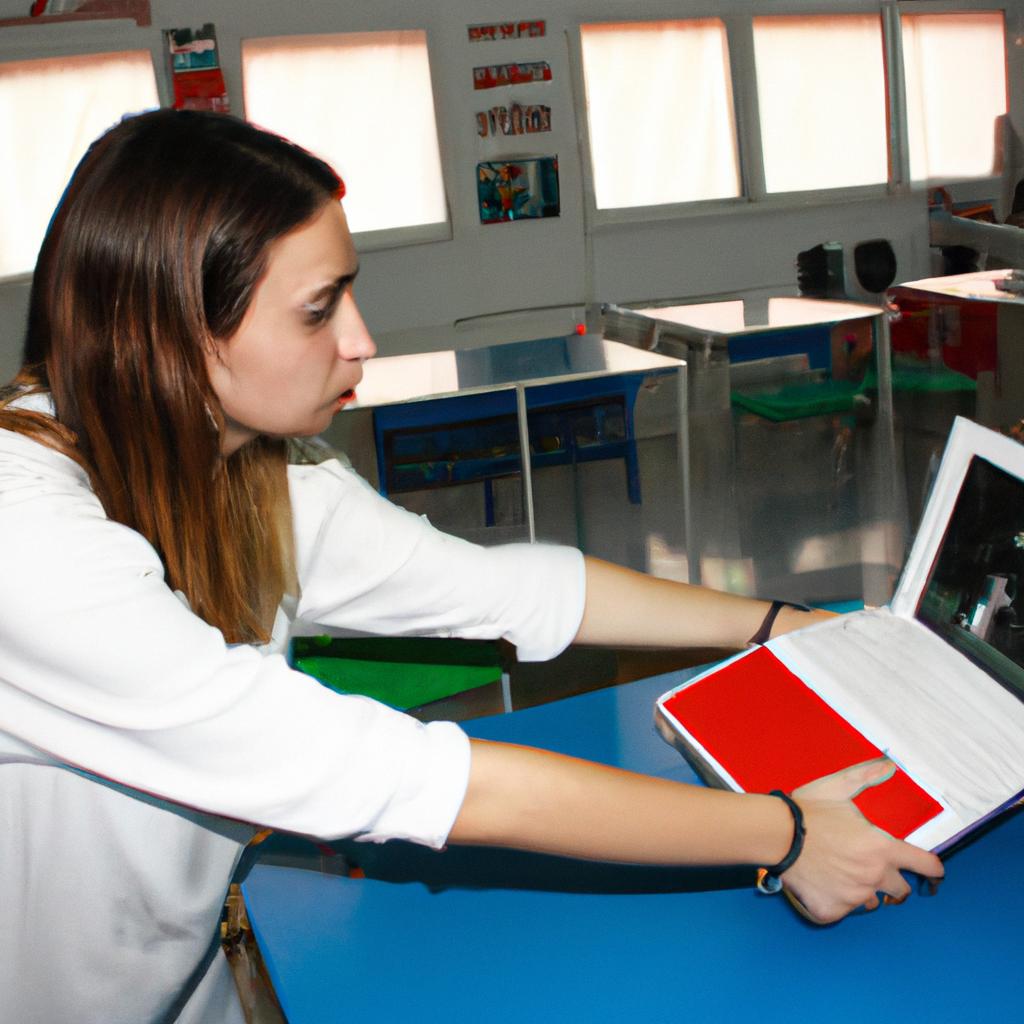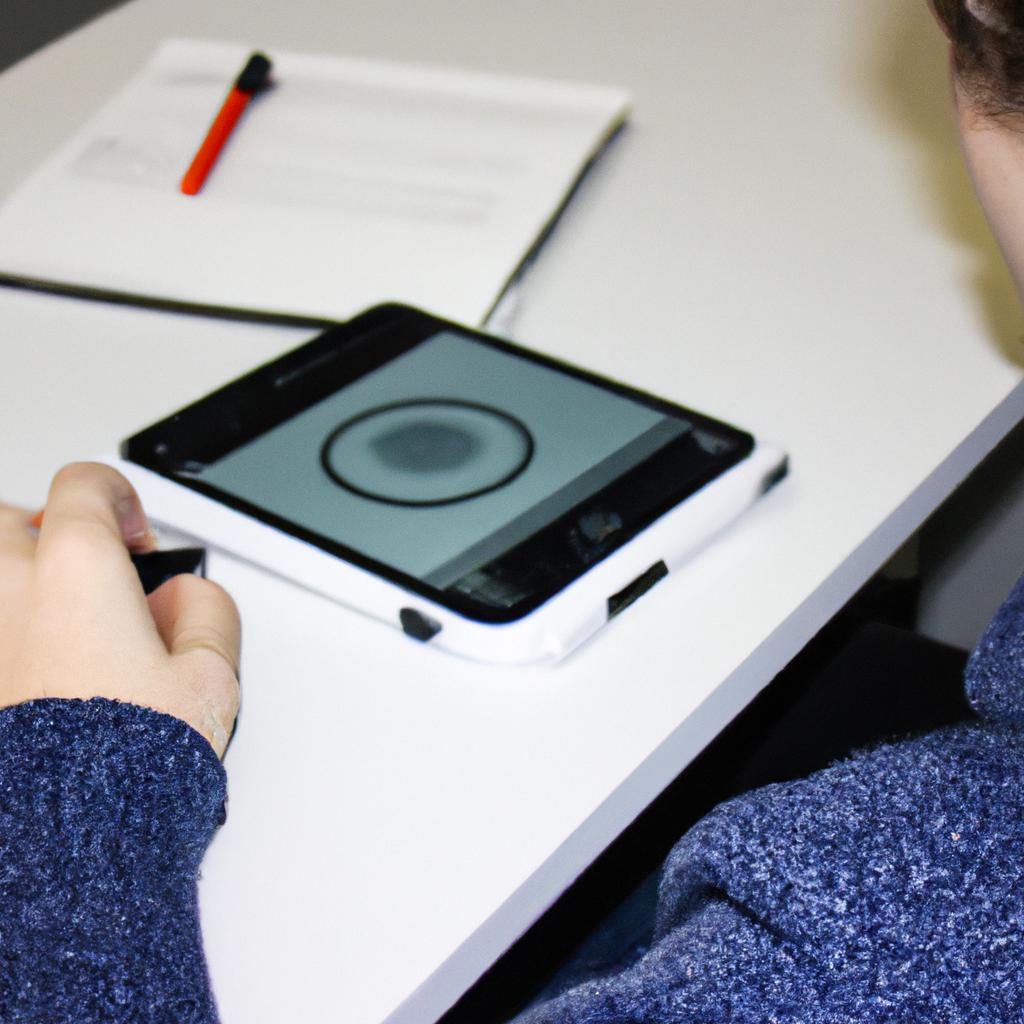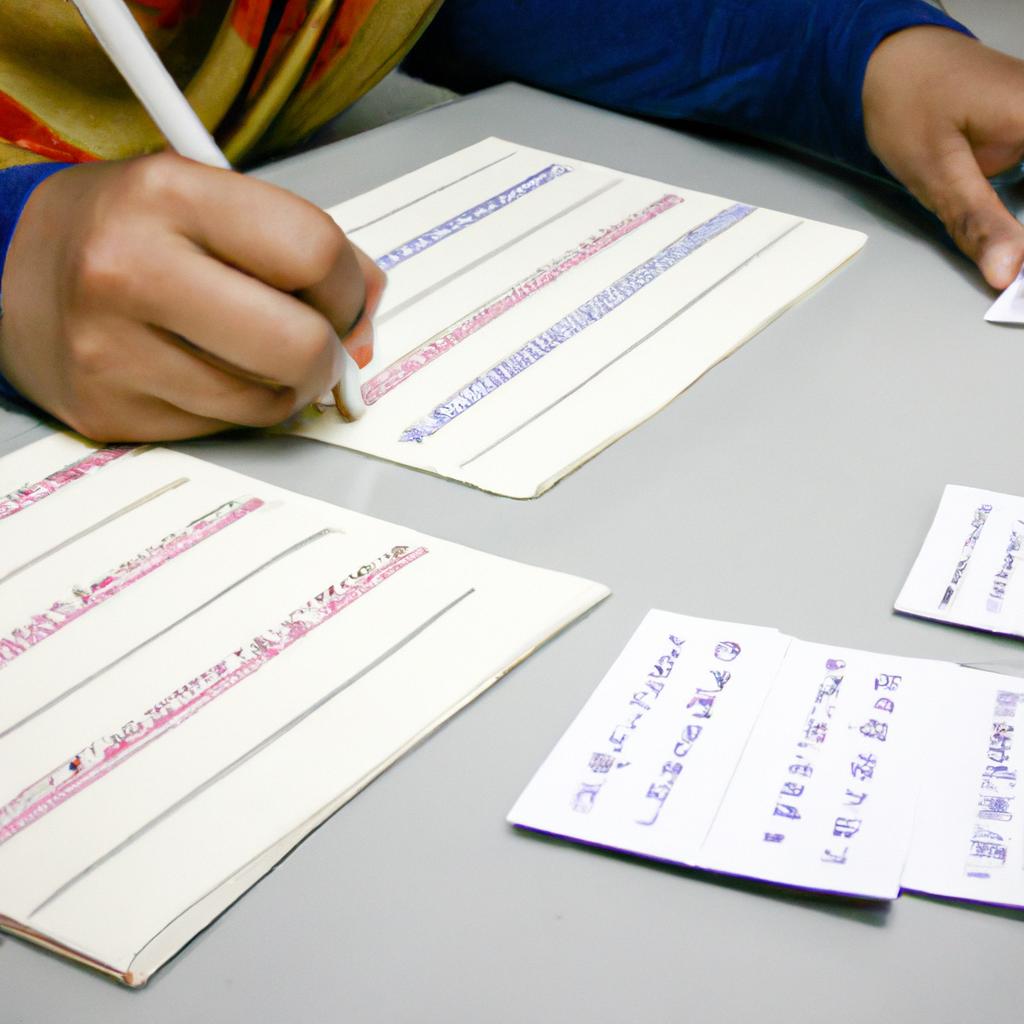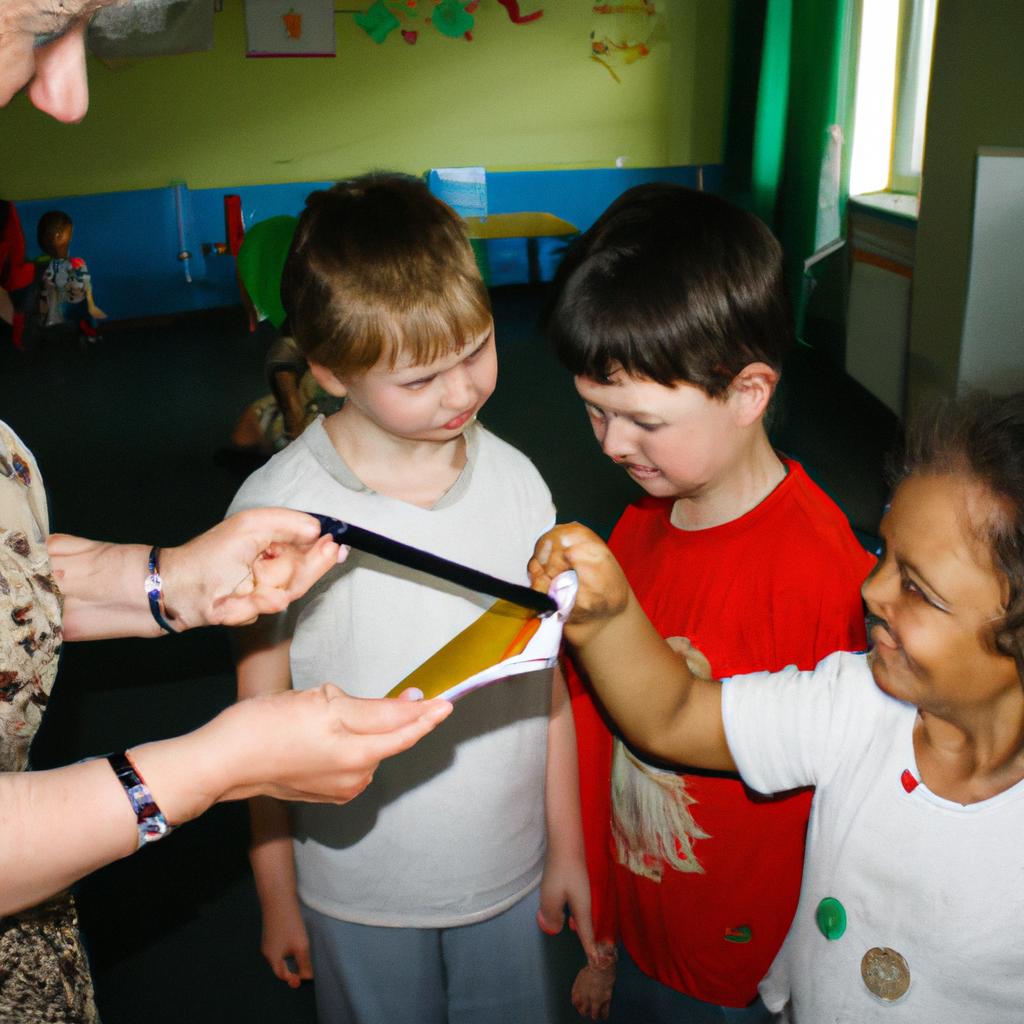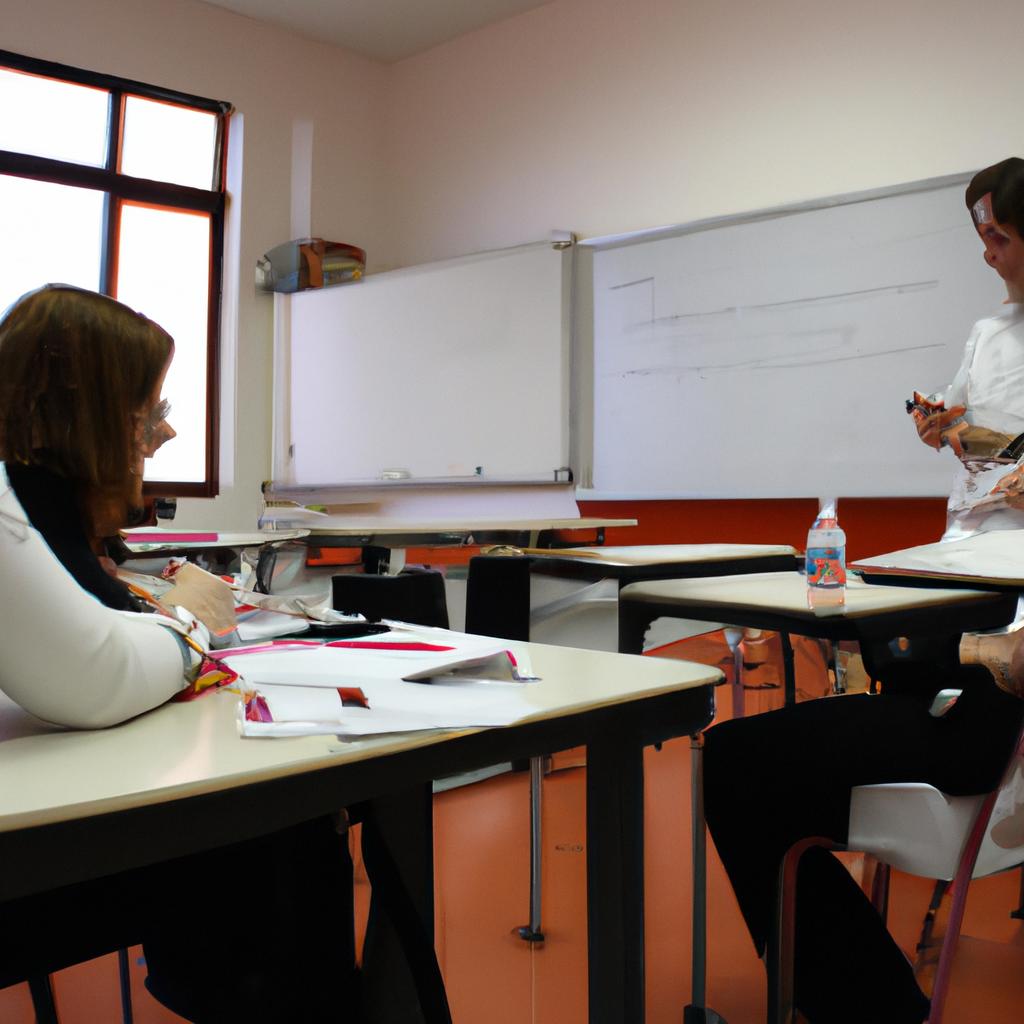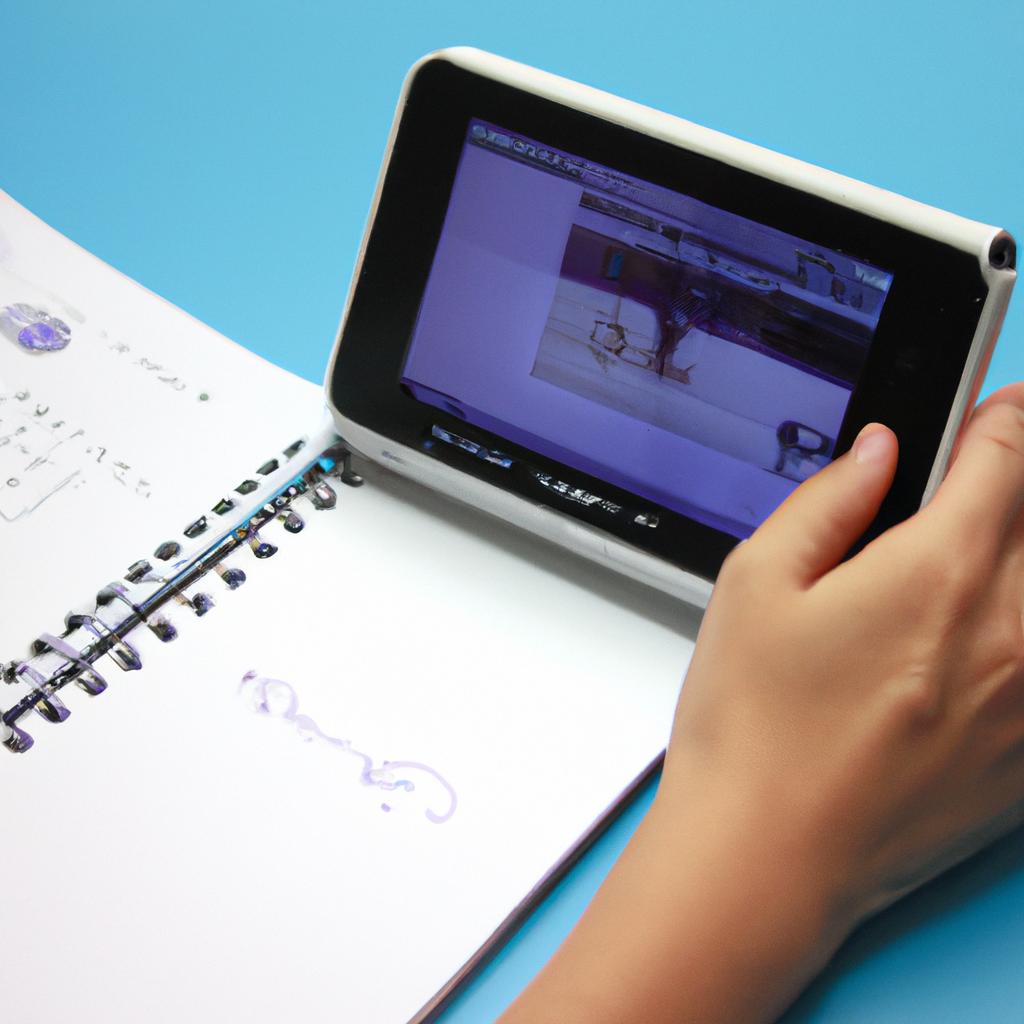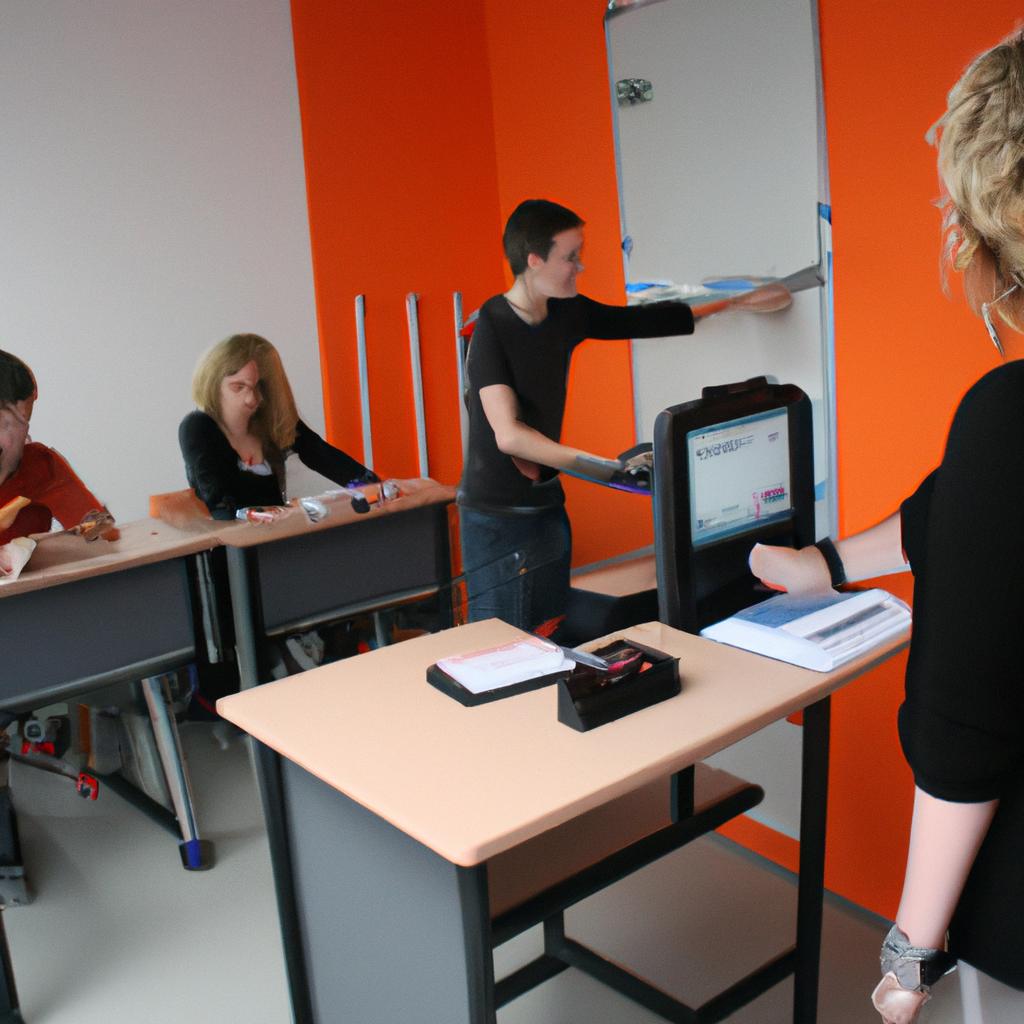Latest Articles
-
Differentiation in Education: Empowering Curriculum Adaptation
In the realm of education, differentiation refers to the practice of tailoring instruction and curriculum to meet the diverse needs of students. It acknowledges ... -
Behavioral Disorders in Education: And Special Education Challenges
In the field of education, dealing with behavioral disorders poses significant challenges for both educators and students. These disorders can range from attention-deficit/hyperactivity disorder ... -
Digital Resources and Textbooks: Enhancing Education through Educational Technology
In recent years, the integration of digital resources and textbooks into educational settings has become increasingly prevalent. This shift towards utilizing technology in education ... -
Lesson Plans: A Comprehensive Guide for Curriculum Implementation in Education
In the field of education, lesson plans play a crucial role in ensuring effective curriculum implementation. A well-designed and comprehensive lesson plan serves as ... -
Assessment in Education: The Key Principles and Best Practices
Assessment in education holds a paramount role in ensuring effective learning outcomes and promoting student achievement. By employing appropriate assessment practices, educators can gain ... -
Work-Study Programs: Education Finance Solutions for Hybrid Learning
Work-study programs have emerged as a viable solution to address the financial challenges associated with hybrid learning. As educational institutions adapt to the changing ... -
Classroom Management: Enhancing Education through Curriculum-focused Strategies
Classroom management is a critical component of effective teaching and learning, as it directly impacts the overall educational experience for both students and teachers. ... -
Education Finance Solutions: Addressing the Hybrid Context of Education
Education finance plays a crucial role in ensuring the provision of quality education to students. However, with the evolving landscape of education and the ... -
Assessment and Grading Tools in Education: Educational Technology
Assessment and grading are crucial components of the educational process, providing valuable insights into students’ learning progress and informing instructional decisions. In today’s technologically ... -
Scholarship Programs: Education Finance Solutions
In today’s increasingly competitive and expensive educational landscape, scholarship programs have emerged as a crucial solution to alleviate the financial burden faced by students. ... -
IEP: Individualized Education Plans in Special Education
In the realm of special education, Individualized Education Plans (IEPs) play a crucial role in providing tailored support and accommodations to students with disabilities. ... -
Active Learning: Enhancing Education Through Innovative Teaching Methods
Active learning is a pedagogical approach that goes beyond the traditional lecture-based teaching methods, aiming to engage students in the learning process actively. This ... -
Financial Aid Services in Education: Hybrid Solutions for Education Finance
In the rapidly evolving landscape of education, financial aid services play a crucial role in ensuring access and affordability for students pursuing higher education. ... -
Educational Technology: Transforming Education Through Innovation
Educational technology, through its innovative applications and integration in educational settings, has been poised to transform the landscape of education. This article delves into ... -
Curriculum in Education: A Comprehensive Overview
Education is a fundamental pillar of society, serving as the catalyst for individual growth and societal progress. At the core of an effective education ... -
Autism in Education: Special Education Strategies
Introduction The inclusion of students with autism spectrum disorder (ASD) in mainstream educational settings has become a topic of increasing importance and concern. The ... -
Instructional Materials: Enhancing Curriculum in Education
Instructional materials play a crucial role in enhancing the effectiveness of curriculum in education. These materials encompass a wide range of resources including textbooks, ... -
Montessori Method: Revolutionary Teaching Strategies in Education
The Montessori Method, a revolutionary approach to education, has gained significant recognition and praise for its unique teaching strategies. By providing students with an ... -
Virtual Reality in Education: The Potential of Educational Technology
Virtual reality (VR) has emerged as a promising technology with vast potential in various fields, including education. By immersing users into simulated environments, VR ... -
Dyslexia in Special Education: And Addressing Educational Challenges
Dyslexia, a specific learning disability that affects reading and language processing skills, poses significant challenges for students in special education. This article aims to ... -
Online Learning Platforms: The Future of Educational Technology
The rapid advancement of technology in recent years has paved the way for significant changes in various industries, including education. One notable development that ... -
Technology Integration in Education: Enhancing Curriculum through Innovation
The integration of technology in education has become increasingly prevalent in recent years, as educators and policymakers recognize its potential to enhance curriculum through ... -
Special Education in Education: A Comprehensive Overview
Special education is a crucial aspect of the educational system that aims to provide tailored support and accommodations for students with diverse learning needs. ... -
Cooperative Learning: Enhancing Education through Effective Teaching Methods
Cooperative learning is a teaching method that promotes active student engagement and collaboration in the classroom. By encouraging students to work together towards a ... -
Education Finance Solutions: Education Savings Accounts
Education finance solutions have become increasingly important in today’s society, as the cost of education continues to rise. One such solution that has gained ... -
Student Loan Options: Education Finance Solutions
The rising costs of higher education have resulted in an increased reliance on student loans for financing academic pursuits. This has prompted a growing ... -
What Is an Installment Loan?
Fixed installment loans are one that is repayable over a specified period of time , with an agreed upon number of installments. It can be ... -
Teaching Methods: Education in Focus
Teaching methods play a pivotal role in shaping the future of education. With an ever-evolving landscape and diverse student populations, educators face the challenge ... -
Peer Assessment in Education: A Comprehensive Guide
In the realm of education, assessing students’ learning and progress has always been a fundamental aspect. Traditionally, this responsibility has fallen primarily on teachers ... -
Project-Based Learning: An Effective Teaching Method in Education
Project-Based Learning (PBL) has gained significant attention in recent years as an effective teaching method in education. This innovative approach involves students engaging in ... -
Standardized Testing: Education
Standardized testing has long been a topic of debate and scrutiny in the realm of education. This assessment method, which aims to measure students’ ... -
Classroom Management Tools: Enhancing Educational Technology in Education
In recent years, the integration of educational technology in classrooms has become increasingly prevalent. With the rapid advancement of digital tools and resources, educators ... -
Differentiated Instruction: Enhancing Teaching Methods in Education
Differentiated Instruction (DI) is a teaching approach that aims to address the diverse learning needs of students within a classroom setting. Unlike traditional one-size-fits-all ... -
Grants: Efficient Education Finance Solutions for Hybrid Learning
The COVID-19 pandemic has significantly impacted the education sector, forcing schools and institutions to adopt hybrid learning models that combine both in-person and online ... -
Summative Assessment: Education’s Evaluation Methods
In the realm of education, assessment plays a pivotal role in gauging students’ learning outcomes and guiding instructional decisions. Summative assessment, one of the ... -
Formative Assessment: Education Assessment Explained
Formative assessment is an integral aspect of the educational system, providing educators with valuable insights into students’ learning progress and enabling them to make ... -
Rubrics in Education: A Comprehensive Assessment Tool
Rubrics, a comprehensive assessment tool in education, have gained significant recognition and implementation across various educational settings. These evaluative frameworks provide clear criteria for ... -
Self-Assessment in Education: A Comprehensive Guide to Effective Evaluation
Self-assessment is a crucial tool in education that empowers students to take ownership of their learning and evaluate their own progress. By engaging in ... -
Flipped Classroom: Enhancing Education Through Innovative Teaching Methods
In recent years, the traditional model of education has undergone significant transformations due to advancements in technology and pedagogical approaches. One such innovative teaching ... -
Learning Management Systems: Educational Technology in Education
The integration of technology in education has revolutionized the way learning is delivered and managed. One prominent example of this educational technology is Learning ... -
Inclusion in Education: Special Education Insights
In recent years, the topic of inclusion in education has gained significant attention and importance. The concept of inclusion refers to the practice of ... -
Learning Disabilities in Special Education: An Informative Guide
Learning disabilities are a complex and multifaceted issue that affects a significant portion of students in special education. These disabilities can manifest themselves in ...
